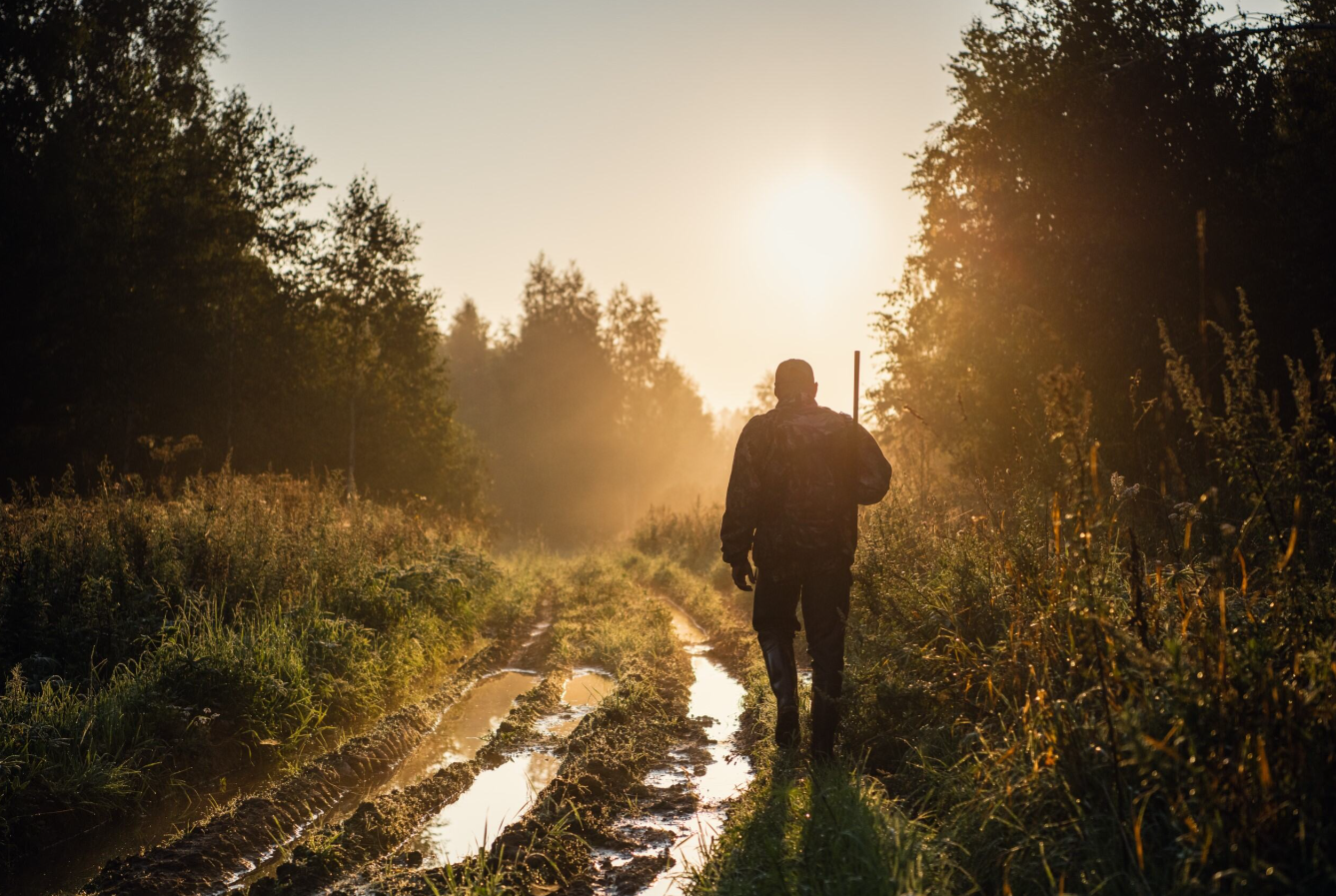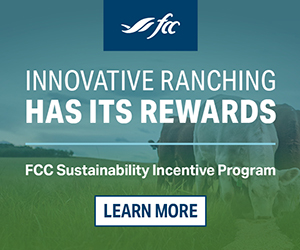AB Direct - Steers
Rail: 492.00-493.50 FOB feedlot (last week)
AB Direct - Heifers
Rail: 492.00-493.50 FOB feedlot (last week)
US Trade- Steers
Rail: 355.00-363.00 (IA, NE) last week
US Trade - Heifers
Rail: 355.00-363.00 (IA, NE) last week
Canadian Dollar
0.19

Where rancher and hunter meet
This article was first published in Volume 4 Issue 3 of ABP Magazine (September 2024). Watch for more digital content from the magazine on ABP Daily.
The success of hunters in Alberta depends on wildlife availability and access, factors affected by the cattle ranchers who manage grasslands. Making prime hunting land accessible for recreational use has become more complex as hunting popularity increases and new digital apps make contacting landowners and leaseholders easy. We asked three Alberta ranchers who manage access to prime hunting land to share their perspectives on the importance of bridging the gap where rancher and hunter meet.
Sundre rancher takes in the view from both sides
Graham Overguard is a fifth-generation rancher who stewards grazing leases and deeded land northwest of Sundre. “My father and I run 225 cow-calf pairs on land our family has ranched since 1904,” he says.
On both deeded and leased land, Overguard is the contact point for hunter access. “When we have hunters who come consistently and are respectful and kind, it goes well. We’ve made lasting relationships with some of these guys.”
Overguard has also been hunting since he was 12. “Hunting is a great way to feed yourself a wonderful protein source and help manage wildlife at the same time,” he says.
If he gets a tag, Overguard will hunt for himself before welcoming others onto his deeded land. Managing access on leased land is different. “If people approach us ahead of time, are courteous and agree to our conditions, I allow almost everybody.”
Coexistence is key
The closer prime hunting land is to large population centres, the greater the pressure for recreational access becomes.
John Buckley ranches southwest of Cochrane, less than 40 minutes from downtown Calgary. He runs 600 cow-calf pairs on deeded and leased land stretching from the Oldman River to the Red Deer River. “We’re absolutely inundated,” he says. “I get over 1,000 emails a year, everything from butterfly and bird watchers to plant people to hunters and fishermen.”
Looking back, Buckley recalls there being concerns with hunting 40 years ago. “Back in the oil boom days of the ’80s, hunting was a safety issue here, because you’d be working underneath flying lead. It became a serious problem. In our community, ranchers on deeded land had to shut it down.”
But the wildlife populations began to increase and spread, and ranchers realized they needed hunters, especially in areas where unregulated species, like elk, herd up and are hard on forage and feed resources.
“From the wildlife management standpoint, hunters are essential,” says Mark Lyseng, Government Relations and Policy Lead with Alberta Beef Producers. “In agricultural areas especially, we don’t have any predators. The only thing controlling animal populations in those areas is hunters.”
Government policy sets the tone
The Alberta government’s Recreational Access Regulation (RAR) requires that hunters and other recreational users connect with the deed or leaseholder in advance, giving ranchers some control.
“Prior to RAR it was a free-for-all on grazing leases. RAR gave us the opportunity to better steward the land. Is it perfect? No. But it’s much better than it was,” Buckley says.
Lyseng adds, “Land access is complex, and there is a growing understanding that we are having problems with it. One way to solve this is through good government policy. It’s also going to take support from both ranchers and hunters to build these relationships.”
One challenge is the current tag draw system, which doesn’t support relationship-building. “There’s no consistency. If the same hunter uses your land year after year, you develop a relationship, but the draw system means hunters often have to look for new spots every year, and the ranchers can’t develop trust in the hunters using their land,” says Lyseng.
“Enforcement poses another challenge. Issuing tickets for failure to contact on leased land is inconsistent, and prosecuting trespassing cases on private land through the courts is difficult,” Lyseng says, “The hunting community feels they have a right to access public land under grazing dispensation. It causes animosity when everyone is vying for access to the same resource.”
Systems approach supports respectful access near Calgary
Like some other ranchers, Buckley has divided his land into zones. Hunters book a zone at least a week in advance for up to three consecutive days on a first-come, first-served basis. “It gives them a better experience and ensures their safety, because they know they are the only group in the zone,” he explains. His system is effective, but the administration is intense. “If demand continues to increase, it will get severely out of balance for me.”
Repeat visits strengthen relationships with Peace ranch
Land access is generally easier to manage in areas where hunting is less desirable or accessible. Such is the case for Gary These, who has peaceful relationships with the hunters who visit his land north of Peace River. “We have hunters who come repeatedly for the elk hunt. Most have become friends who touch base with us throughout the year,” says These.
Here, Gary, his wife Jean, and son Kade, run 200 cows on nine quarter sections of prime hunting land. These recognizes that hunters play an important role in his success. “When we get hundreds of elk using the land, it decimates our feed source. Hunters disperse them so they stay in the hills,” he says.
Producers’ grazing approaches preserve grassland
While juggling multiple priorities, cattle producers play an essential role in the conservation of wildlife habitat, maintaining healthy grasslands. Land use for beef production of which 84 per cent is pasture [used for grazing] contribute the majority of critical habitat wildlife need for reproduction (74 per cent) and feeding (55 per cent) when all Canada’s crop and pastureland is considered, according to the Canadian Roundtable for Sustainable Beef (CRSB).
Using rotational or time-controlled grazing strategies, along with techniques like swath and bale grazing, cattle producers are successfully reducing the long-term impact of beef cattle on their land. Buckley notes that time-controlled grazing means protecting grasses at certain times. “Rough fescue is the major grass on our ranch, and it is most vulnerable in June and early July. To maintain a healthy plant community, we need to stay off it then.”
Using the “take 50, leave 50” rule, Overguard has seen incredible grass recovery, supporting wildlife recovery too: “We see wildlife hanging around in areas where there weren’t any before.”
Grassland conservation supports hunters and ranchers
Alberta’s grasslands are part of an important nationwide ecosystem, being lost at an alarming rate. “The grasslands we have need to be respected and managed properly, and the best way to do that is by having cattle graze,” says Overguard.
Grazing cattle simulates what bison did here for thousands of years. “When we use appropriate grazing strategies, we can see the symbiotic response.”
The success of wildlife that leads to increased hunting opportunities is partly due to the success of ranchers in stewarding healthy grasslands. Here, hunter and rancher meet. Here, with patience, understanding, goodwill and respect for boundaries, the potential to develop trusting relationships exists.



